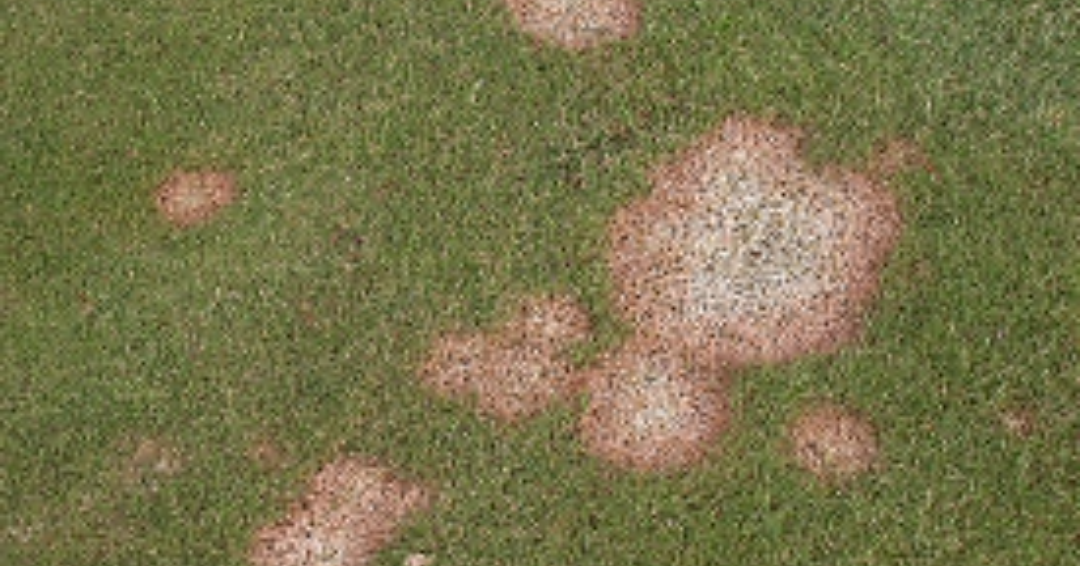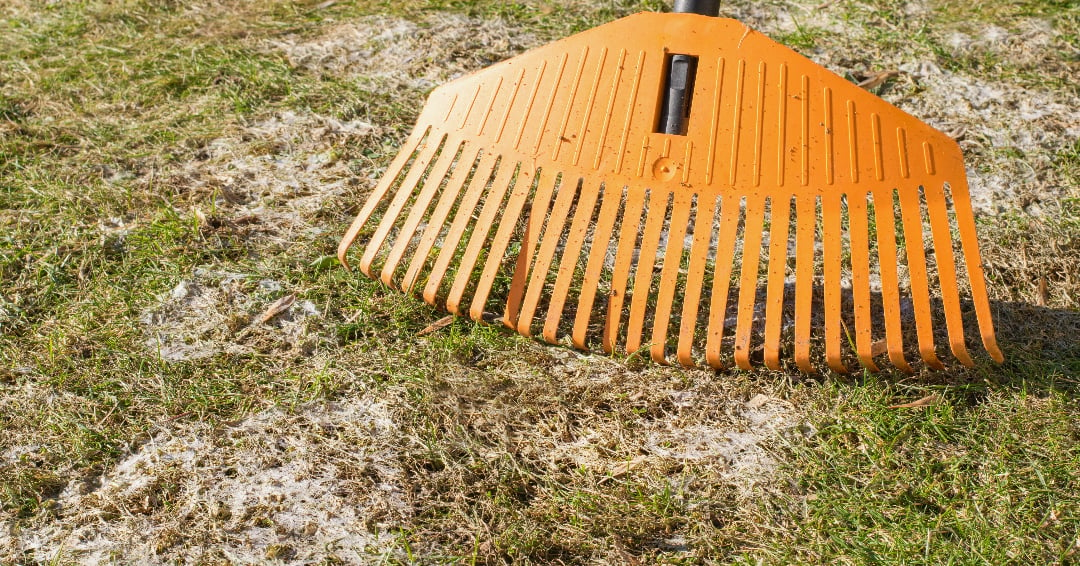Snow mold is a type of fungus that forms during the winter months and produces unsightly patches that can affect the overall health of your lawn in spring. It typically occurs when snow covers the ground for an extended period.
What causes snow mold? If wayward leaves or lawn clippings are allowed to pile up, they can easily trap moisture. The same is true if the first bout of snow comes without the ground getting a chance to freeze. Compound that with layer upon layer of snow typical of a Michigan winter and you have the perfect breeding ground for snow mold.
Snow mold weakens grass by affecting the plant’s structure and health. Weakened grass is more susceptible to other diseases and may not recover as well during the growing season. So it is important to address snow mold issues.
There are two main types of snow mold: gray and pink. Each type requires slightly different conditions for development:
- Gray snow mold (Typhula incarnata, pictured above) is a common lawn disease that typically appears in late winter or early spring as the snow melts. It attacks the blades of your grass without causing much damage to the underlying roots. The symptoms include circular patches of grayish or straw-colored, matted grass that are often surrounded by a dark outer ring. The affected grass may have a slimy appearance. Gray snow mold is typically a cosmetic issue only and the grass usually recovers as the weather warms up.
- Pink snow mold is a turfgrass disease caused by the fungus Microdochium nivale (pictured below). Symptoms of pink snow mold include circular or irregular patches of pinkish-white or salmon-colored fungal growth on the grass blades. The affected areas may appear water-soaked and have a slimy texture. Unlike gray snow mold, pink snow mold attacks the entire plant and causes damage that is harder to reverse.
 Credit: Utah State University; John Kaminski, Flickr.com
Credit: Utah State University; John Kaminski, Flickr.com
What steps can you take to prevent and/or treat snow mold?
RAKE AND REMOVE DEBRIS
For most snow mold issues, you can usually eliminate the fungus by gently raking the grass and debris in your yard. This removes any dead grass and debris and accelerates drying to help the grass recover and discourage further fungal growth.
PROMOTE AIR CIRCULATION
Trim or prune overhanging branches and shrubs to allow more sunlight and air circulation on the lawn. This helps to speed up the drying process and discourage fungal growth.
AERATE THE SOIL
Aerating the soil helps to improve drainage and reduces compaction, creating an environment less favorable for snow mold development. Core aerators are commonly used for this purpose. This is typically done in the fall or early spring when the soil isn’t frozen.
AVOID HEAVY FOOT TRAFFIC
Minimize foot traffic on your lawn during snowy periods as compacted snow can contribute to mold growth.
PRACTICE EFFECTIVE YEAR-ROUND LAWN CARE
You can reduce the threat of snow mold and/or minimize its impact by implementing good lawn care practices, such as regular mowing, proper watering, balanced fertilization and undertaking a thorough fall cleanup to maintain a healthy and resilient lawn that is less prone to diseases.
Let Lush Lawn Help with Your Lawn Needs
Lush Lawn can help with your important lawn care needs and offer assistance with maintaining your yard throughout the coming year, come rain or shine. To get a FREE lawn care estimate, including fertilization, weed control, grub control, aeration and overseeding, contact Lush Lawn today at 866-668-5296 or go online: https://www.lushlawn.com/get-a-free-quote
